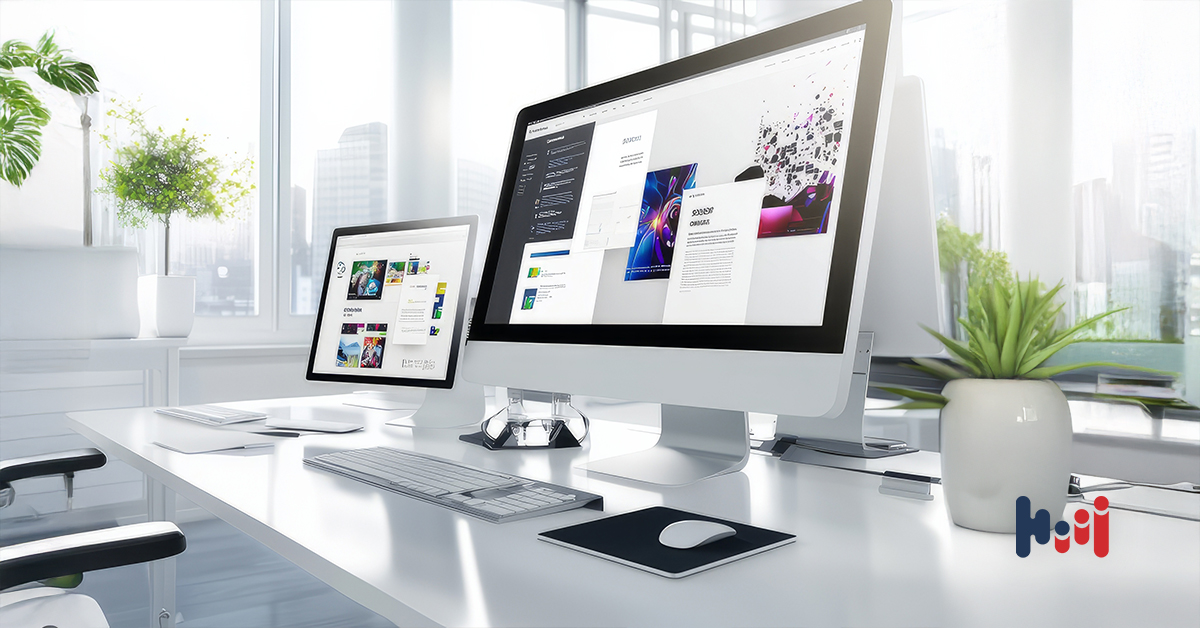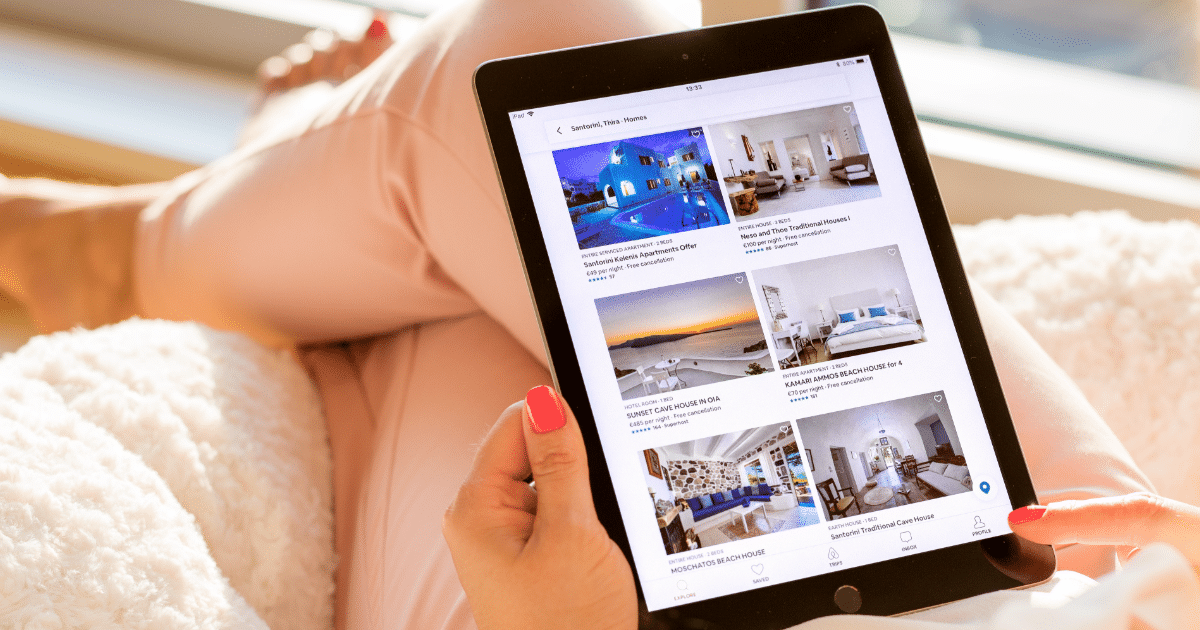
B2B marketing in 2025 looks nothing like it did just a few years ago. The pace of change, fueled by AI, evolving buyer behaviors, and expanding martech stacks, has left many marketers sprinting just to keep up. Buyers are more informed and less patient. Attention spans are shrinking, and expectations for personalization and relevance are rising. Even AI-generated content is shifting the balance, raising the bar for originality and impact.
Against this backdrop, B2B marketers face a new imperative: orchestrate multi-channel strategies that not only reach audiences where they are but move them forward with precision. Among those channels, B2B display advertising has emerged as both a brand-building and demand-driving powerhouse. But success here demands more than great creatives, it requires data, strategy, and alignment with a broader revenue engine.
Let’s unpack how display advertising fits into the big picture of B2B marketing today, and how to use it as a smart tool for pipeline growth.
What are the Four Key Channels in B2B Marketing?
Before diving into display advertising specifically, it’s essential to understand where it fits within the modern B2B marketing ecosystem. Successful strategies are rarely built on a single channel. Instead, marketers must balance a portfolio that works in concert:
- Content Marketing powers discovery and thought leadership. It builds trust and fuels SEO. Whitepapers, blogs, webinars, and eBooks help attract leads, and educate buyers.
- Social Media Marketing enables community-building and brand amplification. Channels like LinkedIn have become critical arenas for thought leadership and peer engagement.
- Email Marketing remains indispensable for nurturing. It offers marketers direct access to inboxes, with personalization capabilities that drive high engagement and conversions.
- Display Advertising amplifies reach, reinforces messaging, and drives conversions at scale. It’s especially powerful when used to retarget high-intent audiences or introduce value props at key journey stages.
The best strategies are not siloed. B2B display advertising works best not as a standalone tactic but as a multiplier of everything else, delivering relevant, compelling messages that echo content themes, spark social engagement, and support lead nurture sequences.
What Does “B2B” Mean in Advertising?
It’s easy to treat B2B advertising like a scaled-down version of B2C. But the dynamics are fundamentally different. B2B decisions are rarely impulsive. They involve multiple stakeholders, longer sales cycles, and a heavier emphasis on logic, ROI, and trust.
In this environment, display advertising plays a nuanced role. It’s not just about impressions and clicks. It’s about influencing perception, supporting account-based marketing, and strategically engaging buyers at the right time. Display helps maintain visibility across complex journeys, ensuring your brand stays top of mind through every consideration stage.
And when paired with intent data, it becomes a smart, agile channel, one that speaks directly to a buyer’s current needs, not just their demographics.
How Much Does Display Advertising Cost?
Costs in B2B display advertising vary widely based on format, targeting depth, and platform. Most campaigns are priced on a cost-per-thousand-impressions (CPM) or cost-per-click (CPC) model. CPMs might range from $3 to $20 depending on targeting granularity, placement, and competition. More specialized platforms like LinkedIn or programmatic networks that use firmographic and technographic data often command premium rates.
But the real question isn’t what display costs, it’s what it’s worth. Low-cost impressions that reach unqualified users are wasted budget. Precision targeting, powered by intent signals and clean data, stretches further. It ensures that ads are seen by people who are not just in your ICP, but actively in-market.
- Cost Per Thousand Impressions (CPM)
CPM is one of the most common pricing models used for display ads. It represents the cost of 1,000 impressions, which means the number of times an ad is shown to potential customers. The cost fluctuates considerably due to elements such as industry, competition, target audience, and advertisement quality. Typically, CPMs fall between $5 and $18 across different sectors, with some exceeding $50 based on traffic and additional considerations. The more niche or specialized the audience, the higher the CPM. - Cost Per Click (CPC)
CPC is another pricing model commonly used for display advertising. Instead of paying for impressions, advertisers only pay when someone clicks on the ad. The CPC for B2B display ads varies widely, but it generally ranges from $0.50 to $3 per click. More competitive industries, such as technology or finance, may experience higher CPC due to the higher demand for ad space. - Display Ad Sizes and Costs
The size and format of a display ad can also affect the cost. Larger ads or those placed in premium positions (like above the fold or in high-traffic areas) typically cost more. For example, a leaderboard ad (728×90 pixels) will cost more than a medium rectangle (300×250 pixels), as the larger ad takes up more space on the page. Marketers can choose from different display ad sizes to suit their needs and budget, depending on the platform and the target audience. - Targeting and Reach
One of the most significant factors affecting the cost of B2B display advertising is the ability to target specific audience segments. The more granular your targeting (e.g., specific industries, job titles, or company sizes), the higher the cost per impression or click. However, this also means your ads will be shown to the most relevant audience, increasing the chances of conversions.
The smartest marketers in 2025 aren’t cutting spend. They’re reallocating it toward smarter placements that deliver measurable business impact.
What are Examples of Display Advertising Formats?
Display advertising isn’t a single format, it’s a collection of dynamic, visual ad types that appear across websites, social feeds, video platforms, and audio networks. The core idea is to create engaging, attention-grabbing ads that encourage viewers to take action.
Key types of display advertising include:
- Banner Ads: The most common format, static or animated, typically shown on websites. Their effectiveness depends heavily on design and placement.
- Video Ads: Increasingly popular in B2B for storytelling and product explainers. Can run in-feed, pre-roll, or within OTT platforms.
- Dynamic Ads: Personalized ad units that adapt based on a viewer’s behavior or data profile. Ideal for retargeting or ABM.
- Native Ads: These match the look and feel of surrounding content, boosting engagement and avoiding “ad fatigue.”
- Interstitial Ads: Full-screen experiences that appear between content transitions. Best used sparingly and with clear value.
- OTT Ads: Ads on connected TV platforms like Hulu or Roku, useful for brand campaigns targeting decision-makers in specific verticals.
- Audio Ads: Podcast or streaming platform placements. Effective for brand-building in specific professional niches.
Each format has strategic use cases. The key is not just choosing the right one, but aligning format with message, audience, and buying stage. If you’re looking for inspiration or want to benchmark your strategy, exploring some of the best B2B display ads examples can reveal what truly resonates with today’s decision-makers, but remember, effectiveness always depends on your industry, audience, and campaign goals.
How to Create a Display Ad?
Let’s skip the basics. If you’re still debating whether to include a strong value prop or whether high-quality visuals matter, this might not be the guide for you. Those are table stakes. And if your CTA isn’t clear or your copy isn’t focused, you’ve got bigger problems to solve before thinking about optimization. Testing and tweaking? Of course. But we’re not here to talk about common sense.
Creating high-performing display ads starts with clarity: who are you targeting, and what action do you want them to take?
Step one is audience definition. This goes beyond basic job titles or company size. You need a strong ICP, enriched with firmographic data, layered with real-time intent signals. That means targeting not just who you want to sell to, but who’s actively in-market. It also means mapping buyer journey stages so your creative matches their mindset. The messaging for a prospect in awareness is not the same as for one deep in consideration.
Next is creative strategy. Good design does more than grab attention—it creates connection. Messaging must be instantly clear, emotionally resonant, and visually distinct. Avoid packing too much text. Highlight pain points and outcomes. Use strong, specific CTAs that guide the next step and offer real value. For example, “See how peers solve X,” beats “Learn more.”
Then, consider where your ads live. Set up targeting and placements on platforms where your buyers already consume content. Programmatic platforms let you scale efficiently, while LinkedIn may offer better contextual alignment for C-suite targeting. Always implement frequency caps to avoid saturation and frustration. Segment your messaging by funnel stage to make every interaction feel relevant.
Finally, build an attribution loop. Most marketers still track surface-level metrics like CTRs or impressions. But without understanding post-click behavior, site visits, engagement depth, lead progression, pipeline influence, you’re flying blind. Strategic marketers build attribution models that show how display impacts not just awareness, but deal progression and revenue generation. Whether through CRM integration, intent tracking, or multi-touch reporting, aligning display with your revenue engine turns it from a spend line item into a performance driver that influences your broader funnel, not just the top.
This is where strategic marketers thrive. They turn creative into conversions, data into direction, and display into a channel that’s both brand and revenue aligned.
RELATED: Keeping Your Display Ads Fresh and Engaging
What is “Retargeting Display Ads” About?
Retargeting display ads (also called remarketing display ads) refer to ad units shown to users who have previously interacted with your website, app, or brand in some way. The goal is to re-engage those users and bring them back into your funnel or push them toward conversion.
- Retargeting helps you stay top-of-mind, reinforcing your value propositions as prospects evaluate alternatives.
- Many B2B buyers don’t convert on first touch. Retargeting ensures your brand maintains visibility as they continue researching.
- Because the audience is already “warm,” performance (CTR, conversion rate) is often better than cold display.
How Retargeting Display Ads Work (In Practice)
- Tagging / Pixel installation: You place a JavaScript snippet (e.g. via Google Ads, Demand Side Platform, or your marketing tech stack) on your site pages.
- Audience segmentation: You define which visitors to retarget (e.g. visited pricing, downloaded content, visited product pages).
- Creative tailoring: You serve ads with messaging aligned to their prior action (for instance, “Still thinking it over?” or “See how peers solved X”).
- Frequency caps & exclusion windows: You limit how often these users see your ads and avoid oversaturating them.
- Conversion tracking & attribution: You track which retargeted ads led to re-visits, actions, or conversions, and map that into your funnel metrics.
When implementing retargeting display ads, it’s important to follow a set of best practices that maximize both efficiency and impact. Start by segmenting audiences based on behavior or intent rather than treating all visitors the same. For example, someone who has explored your pricing page signals much higher purchase readiness than a casual blog reader. From there, use dynamic creatives that adapt to the user’s past interactions, serving relevant products, content, or offers that reflect their specific journey. In B2B, it’s also wise to set longer lookback windows, such as 30, 60, or even 90 days, to align with extended buying cycles. Just as importantly, exclude users who have already converted into leads or customers to avoid wasted impressions. Finally, test and refine ad frequency and duration to strike the balance between staying visible and avoiding fatigue. Done well, retargeting display ads become one of the most cost-effective levers in a B2B display strategy, bridging the gap between awareness and conversion for audiences already familiar with your brand.
Which Platform Is Best for Display Ads?
There is no one-size-fits-all answer to which platform is best for display ads, especially in B2B. The best choice depends on your audience, objectives, budget, and how far along your buyers are in their journey. Below is a breakdown of the top options and considerations to help you decide.
| Platform | Strengths for B2B | Considerations / Tradeoffs |
|---|---|---|
| Google Display Network (GDN) | Massive reach across millions of sites, granular targeting (topics, placements, affinity audiences). | High competition for generic keywords, risk of showing on irrelevant sites without careful exclusions. |
| Programmatic DSPs (e.g. The Trade Desk, DV360) | Advanced targeting (account-level, intent, retargeting), unified cross-inventory buying. | Requires setup and optimization skill; must carefully manage data and creatives. |
| LinkedIn Display / Audience Network | Strong for reaching professionals by title, company, industry — particularly useful in B2B. | Costs tend to be higher per impression or click; lower scale compared to GDN. |
| Native Ad Platforms (Taboola, Outbrain, etc.) | Good for content amplification, discovery, and native experience. | Lower intent audience; need strong content and follow-up to convert. |
| Social Platforms with Display Capabilities (e.g. Facebook, Instagram, X, TikTok) | Broad reach and creative flexibility; good for brand awareness or mid-funnel. | Less ideal for strictly B2B targeting (though some targeting options exist); may require more filtering. |
| Private/Vertical Media Sites | High relevance and niche audiences in certain industries (e.g. trade publications). | Scale may be limited; sometimes less measurement or transparency. |
When choosing the right platform for display ads, the best option often depends on your specific goals and use case. If broad reach at a relatively low cost is your priority, the Google Display Network offers a solid starting point with access to millions of sites and audiences. For more targeted approaches, such as account-based marketing or reaching specific companies and roles, a programmatic DSP or LinkedIn provides the precision needed to connect with high-value decision-makers. If your objective is to push content and drive discovery, native display platforms are a strong addition, blending seamlessly into the user’s content experience. And for high-intent campaigns where precision retargeting is critical, relying on your DSP or leveraging Google and LinkedIn with first-party audience signals ensures your ads reach prospects already primed for engagement.
Using B2B Data for Display Advertising
Here’s where the conversation gets real. Display advertising isn’t inherently smart. It becomes smart when powered by the right data. Let’s be clear, there’s no such thing as effective display advertising without the right data behind it. That’s the baseline.
- Firmographic data helps marketers zero in on companies that fit their ICP, by size, industry, geography, and more. Whether you’re targeting mid-market SaaS buyers or enterprise healthcare executives, precision starts here.
- Behavioral data adds another layer of insight. By tracking site visits, content engagement, or even product page views, you enable intelligent retargeting. Ads reflect real interests, not assumptions. And retargeting remains one of the highest-performing tactics in B2B especially when you’re staying visible to prospects already showing buying signals.
- Demographic data drills into the individual: job titles, seniority levels, and functional roles. Reaching the right company isn’t enough. You need to reach the right buyer. Personalizing a display ad for a CMO versus a Demand Gen Manager isn’t overkill, it’s smart marketing.
That’s where DemandScience steps in. We unify firmographic, demographic, and behavioral intent data to help marketers launch smarter, more responsive campaigns. Our data engine ensures your ads aren’t just shown, they’re seen by the right people, in the right accounts, at the right time.
The results? Higher engagement. Shorter sales cycles. And a display strategy that’s seamlessly integrated with the rest of your funnel.
With the right data, display becomes one of the most accountable and high-impact tools in your digital marketing arsenal. And we help connect the dots between display and every other channel. Want to retarget based on webinar attendance? Sync creative with your nurture tracks? Drive hand-raisers straight to SDRs? We make it happen. That’s the difference between running ads and generating outcomes.
READ MORE: Leveraging Data to Optimize Your Display Advertising Campaigns
Display Advertising Goes Beyond Brand Awareness
The days of set-it-and-forget-it banner ads are over. In 2025, success requires data-fueled strategies, full-funnel alignment, and relentless optimization. If your team is still treating display as an afterthought, a checkbox for brand awareness or retargeting, you’re leaving pipeline on the table.
Smart B2B marketing leaders know: content, social, email, and display aren’t separate tactics. They’re connected levers in a unified revenue engine. And with the right partner, one who brings both the data and the expertise, display becomes more than just impressions. It becomes impact.
Ready to take control of your display strategy?
Let’s start driving growth.










